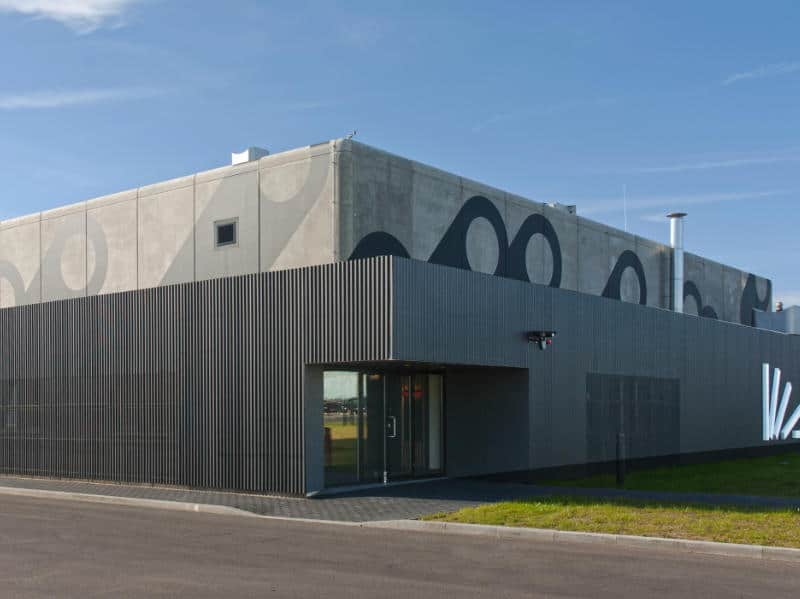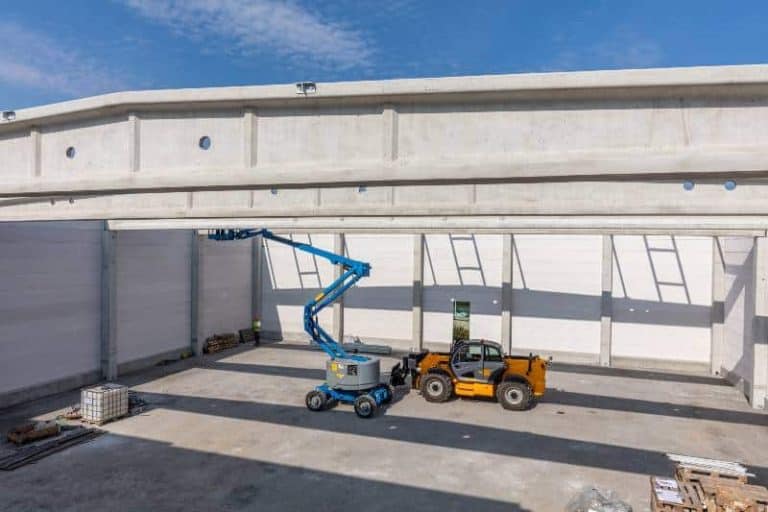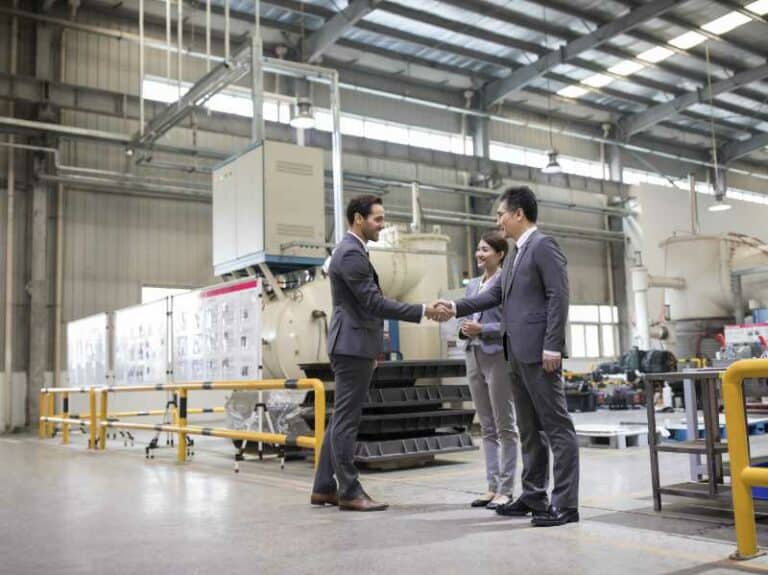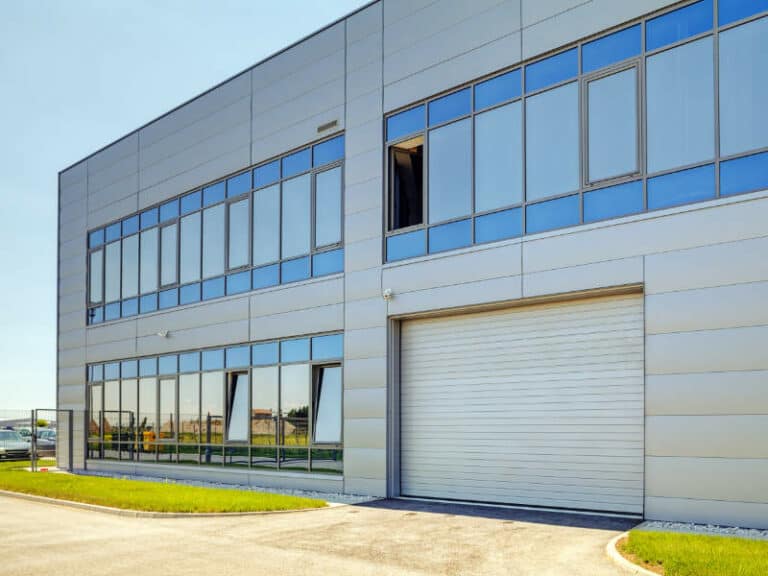Industrial buildings can be a great investment, but they can be difficult to understand and assess. It can be hard to know where to start when it comes to investing in industrial buildings. What are the different types of industrial buildings? What are the pros and cons of each type? And what are the best areas in Los Angeles for this type of real estate? In this article, we will explore the different types of industrial buildings and what makes them special. We will also take a look at some opportunities in the Los Angeles area for those interested in this type of real estate.
There are different industrial building types they all come in all shapes and sizes. The main types include manufacturing buildings, warehouses, data centers, R&D facilities, flex spaces, and showrooms. Each type of industrial building provides unique features and purposes.
Manufacturing Buildings
One of the most common types of industrial building examples is a manufacturing building. These are structures that house businesses involved in the production of goods. Manufacturing buildings can come in all shapes and sizes, from small single-story warehouses to large multi-story factories.
Some of the key features of manufacturing buildings include:
- Ample space for production equipment
- High ceilings to accommodate overhead cranes and other machinery
- Heavy-duty floors to support heavy equipment
- Numerous loading docks for receiving raw materials and shipping finished products
In recent years, the industrial sector has witnessed unprecedented growth, largely driven by the surge in online shopping. This trend has significantly increased the demand for warehouses and storage facilities, making industrial real estate a lucrative investment. In 2023, the industrial sector outperformed all other sectors, with the cost of renting industrial space rising by 6.6% year-over-year (YoY).
Despite this increase, the sector faced a decrease in vacancy rates and net absorption, following a 31% surge in delivered square footage over the past year.
This scenario underscores the burgeoning need for industrial buildings across various types, including manufacturing, warehousing, and distribution facilities, especially in thriving markets like Los Angeles.
Light Manufacturing Buildings
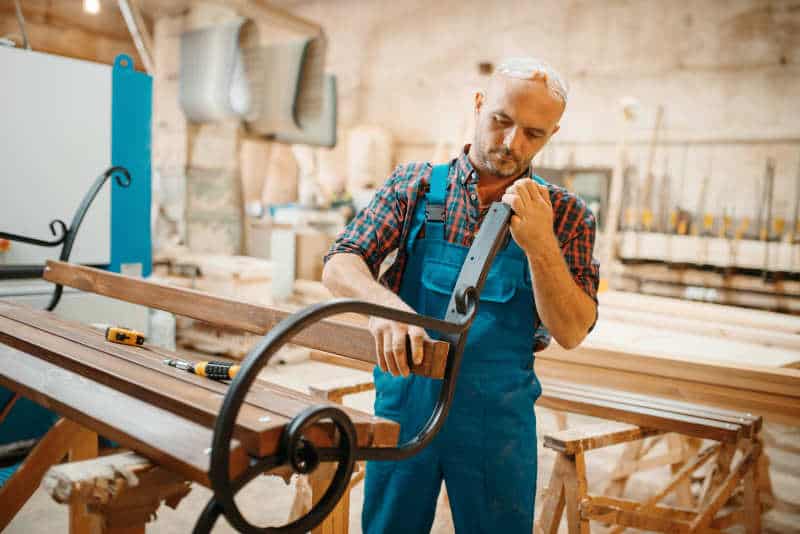
Another type of industrial building is a light manufacturing building. These are typically smaller than manufacturing buildings and are used for businesses that assemble smaller products or components. Light assembly buildings often have features such as:
- Smaller production areas
- Lighter duty floors
- Fewer loading docks
- Lower ceilings
- Office space for administrative functions
- Modern storage space
- Typically lower square feet requirements
Examples of businesses that use light assembly buildings include electronics manufacturers, toy companies, and furniture assembly.
Heavy manufacturing
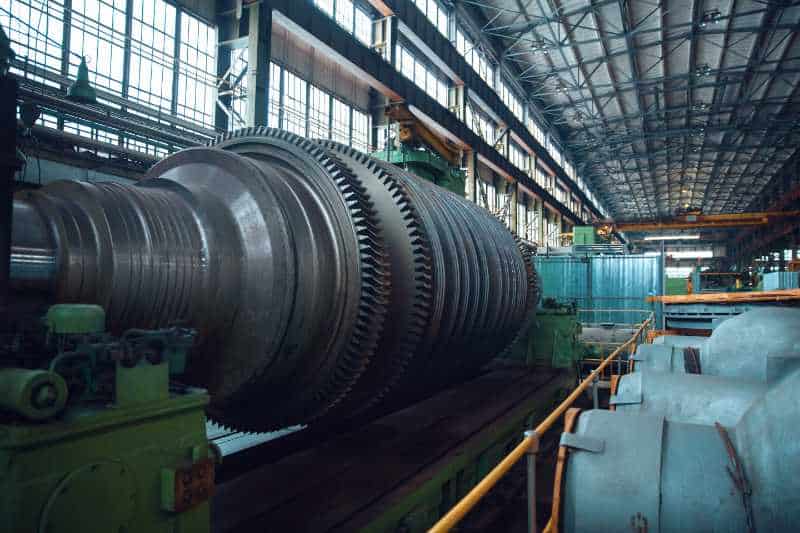
In addition to light assembly, industrial buildings can be used for heavy manufacturing. These are businesses that require large production areas and heavy-duty equipment. Heavy manufacturing buildings often have features such as:
- Extra-large production areas
- Heavy-duty floors
- Large loading docks
- Multiple stories
- Elevators or freight lifts
- High ceilings
- Distribution Centers
Examples of businesses include Aircraft parts manufacturing, Automobile parts manufacturing, Furniture Manufacturing, and others.
Warehouses
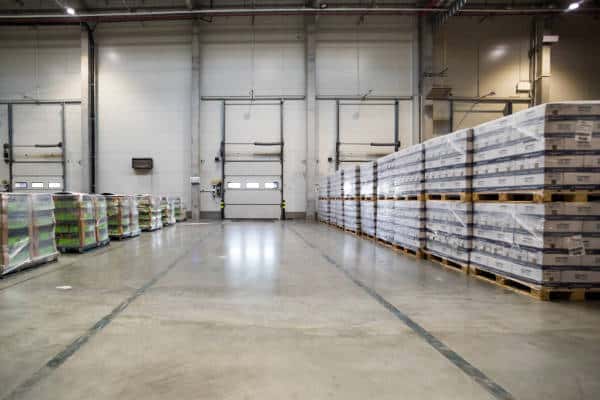
Another common type of industrial building is a warehouse. Warehouses are open spaces used to store products and materials. They typically have features such as:
- High ceilings
- Forklifts or other material-handling equipment
- Loading docks
- Racking or shelving systems
- Office space for administrative functions
Some warehouses are climate-controlled to protect sensitive materials from temperature extremes. Warehouses come in a variety of sizes, from small single-story buildings to large multi-story structures.
Types of Warehouse Buildings
General Warehouses
These are the most common types of warehouses. They are used to store a variety of different products and materials.
Cold Storage Facilities
These warehouses are used to store perishable items such as food, medications, and flowers. They are temperature-controlled to keep these items from spoiling or going bad. Cold storage facilities are typically larger than general warehouses.
Hazardous Material Warehouses
These warehouses are used to store materials that are flammable, corrosive, or otherwise dangerous. They have special features to protect workers and the surrounding community from these hazards.
Specialized Warehouses
Some warehouses are designed for specific types of materials. These include art storage warehouses, automobile storage warehouses, and wine storage warehouses.
Distribution Warehouse
Finally, there are bulk distribution warehouses. These warehouses are used to store large quantities of a single product. They often have features such as conveyor belts, packing and shipping machines, and robotic arms. A good distribution warehouse should be located near transportation hubs such as airports, ports, and railroads.
Data Centers
Data centers are examples of industrial buildings that house computer servers and other telecommunications equipment. Data centers need features such as cooling systems to keep equipment from overheating, uninterruptible power supplies to keep the equipment running in case of a power outage, fire suppression systems, and security systems to protect the equipment from theft or damage. Data centers come in a variety of sizes, from small closet-sized rooms to large multi-story buildings.
Web hosting facilities are a good example of the type of data center that rents space on their servers to customers.
Flex Space
Flex space is a type of industrial space that has office space, production space, and storage space all in one location. This allows businesses to have a variety of operations in one building. Flex space often has features such as office space for administrative functions, conference rooms, production areas, storage areas, and shipping and receiving docks. Flex space is often leased by businesses that need a temporary or small can be adapted to a variety of uses.
Types of Flex Buildings
Warehouse/Office Combination
This type of flex space has office space and warehouse space in the same building. Flex buildings of this type often have features such as office space for administrative functions, conference rooms, production areas, storage areas, and shipping and receiving docks.a
Showroom/Warehouse Combination
This type of flex space has showroom space and warehouse space in the same building. This is ideal for businesses that sell products that need to be displayed, such as furniture or automotive parts.
Research and Development Facility
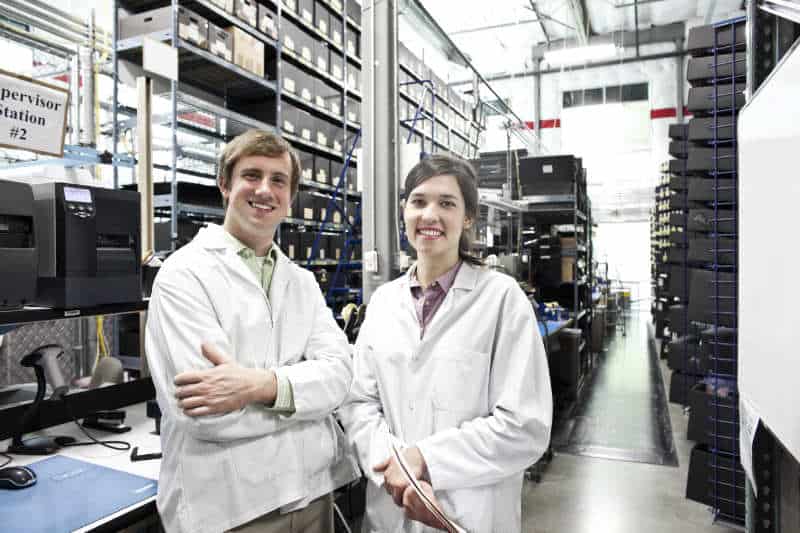
Industrial properties can also be dedicated for research and development purposes. These facilities often have office space for administrative and support functions, laboratory space, and production space. Many research and development facilities are dedicated to a specific industry, such as pharmaceuticals, electronics, or aerospace. They need the building(s) to have features such as specialized equipment, fire suppression systems, and security systems.
Truck Terminals
Truck terminals are types of industrial buildings that are used to store and service trucks. They often have features such as parking spaces for trucks, service bays for maintenance and repairs, and fueling stations. Truck terminals may also have office space for administrative functions and space for loading and unloading cargo. Oftentimes, truck terminals are located near highways or other major transportation routes.
| Type of Industrial Building | Key Features | Examples of Businesses |
|---|---|---|
| Manufacturing Buildings | – Ample space for production equipment – High ceilings for machinery – Heavy-duty floors – Numerous loading docks | – Automobile parts manufacturing – Furniture Manufacturing |
| Light Manufacturing Buildings | – Smaller production areas – Lighter duty floors – Fewer loading docks – Lower ceilings – Office space for administrative functions | – Electronics manufacturers – Toy companies |
| Heavy Manufacturing Buildings | – Extra-large production areas – Heavy-duty floors – Large loading docks – Multiple stories – High ceilings | – Aircraft parts manufacturing |
| Warehouses | – High ceilings – Forklifts/material handling equipment – Loading docks – Racking/shelving systems – Office space | – General storage – Cold storage facilities |
| Data Centers | – Cooling systems for equipment – Uninterruptible power supplies – Fire suppression systems – Security systems | – Web hosting facilities |
| Flex Spaces | – Office space – Production space – Storage space – Shipping and receiving docks | – Businesses needing temporary or versatile space |
| Research and Development Facilities | – Office space for support functions – Laboratory space – Specialized equipment | – Pharmaceuticals – Electronics |
| Truck Terminals | – Parking spaces for trucks – Service bays – Fueling stations – Office space for administrative functions | – Logistics and transportation companies |
| Showrooms | – Display cases – Storage rooms – Office space | – Furniture stores – Automotive parts sellers |
Showrooms
Showrooms are types of industrial buildings that are used to display products for sale. They often have features such as display cases, storage rooms, and office space. Many showrooms are located in high-traffic areas such as shopping malls or along major transportation routes. However, some showrooms are located in industrial parks or other types of business parks.
Opportunities in Los Angeles
In recent years, the Los Angeles area has seen a huge increase in demand for industrial buildings. The region is home to a large number of businesses, many of which are in the manufacturing, logistics, and online retail industries. As a result, there is a great demand for warehouses, distribution centers, and showrooms. In addition, the Los Angeles area is also home to a large number of data centers.
There are still many types of industrial buildings available in the Los Angeles area. Finding the right one that fits your business needs is essential to your success. Sometimes it can be challenging to find, but with the help of a good Commercial Real Estate Broker, you should be able to find something that works for you. They have the experience and the knowledge of the market to help you find the right building at the right price.
FAQs
What are the three types of industrial buildings?
There are eight different types of industrial buildings, which can be categorized into three main groups: manufacturing, storage and distribution, and flex space.
What are the classifications of industrial buildings?
There are three main categories of industrial buildings: manufacturing, warehousing and distribution, and flexible space. These buildings can serve various purposes based on their location and available resources.
What classifies a building as industrial?
Industrial buildings are large premises used for manufacturing or storing materials and goods for economic purposes.
What are examples of industrial architecture buildings?
Industrial architecture encompasses the design and construction of buildings within the industrial sector. This includes a wide range of structures such as factories, refineries, distilleries, warehouses, power plants, distribution centers, and manufacturing facilities. These designs are tailored to meet the specific needs and requirements of industries, focusing on functionality, efficiency, and safety for both the operations housed within and the workers who operate them.
The Bottom Line
There are many different types of industrial buildings. Each type has its own unique features and benefits. When choosing an industrial building for your business, it is important to consider your specific needs such as square feet, location, and type of business. Flex buildings, warehouse/office combinations, showroom/warehouse combinations, research and development facilities, cold storage buildings, and showrooms are all popular types of industrial buildings in the Los Angeles area.
If you’re looking for industrial space and want to help locate one, don’t hesitate to reach out to a Commercial Real Estate Broker. They have the experience & will be able to help you find the perfect building for your business needs.
Blog Articles Disclaimer
The information presented in articles on our website or affiliated platforms is exclusively intended for informational purposes. It’s crucial to grasp that this content does not constitute professional advice or services. We strongly recommend our readers to seek guidance from appropriately qualified experts, including, but not limited to, real estate and other attorneys, accountants, financial planners, bankers, mortgage professionals, architects, government officials, engineers, and related professionals. These experts can offer personalized counsel tailored to the specific nuances of your individual circumstances. Relying on the content without consulting the relevant experts may hinder informed decision-making. Consequently, neither Tolj Commercial Real Estate nor its agents assume any responsibility for potential consequences that may arise from such action.
